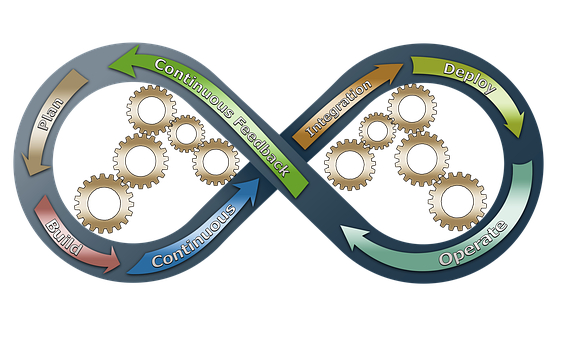
Digitalization has caused a global avalanche in the Industrial markets due to the rise of enormous advancements in technological and digital transformation. This further lead Industries and businesses to constantly innovate and reinvent themselves.
“Innovation is an ever learning process”

Over time, Industries have adopted numerous innovative practices to enhance their business values and markets. In the process, while implementing the latest technologies into the workflow, the product quality had to be extremely reliable and sustainable.
Testing methods and procedures have evolved hugely due to variable Industrial business trends and innovations. Organizations adopt QA testing practices based on the manufacturing processes involved. For any industry to sustain, quality maintenance of the product is a priority.
“Quality is the key to sustenance”

Learn more about the impressive software testing trends to stay ahead in the Innovative game.
Organizations develop, verify, deliver, and manage the software. Detailed process analysis or study allows industries to acknowledge the flaws in the process and calculate the need for speed in the QA process.
Research states that approximately 30% of a project’s effort goes into QA testing. This is the phase where Industries must focus on to realize any enhancements and implementations in Quality Assurance Testing. Testing tools and methods must evolve to address the challenges of achieving “Quality at Speed” amidst the increasing complexity of systems, environments, and data.
“Quality at Speed is the latest trend in Software Testing”

Top Software Testing Trends in 2019:
Data analysis report for 2019 confirms that Agile test automation is one of the few notable trends to adopt in Quality Assurance Testing.
Let’s explore them in detail:
Agile for QA:
It is the latest trend in Software Development which is recognized as one of the key solutions to rapidly changing requirements.
In other terms, this testing is a dynamic way to ensure that the software is at its best standard.
What Makes Agile Quality Assurance Testing Different?
For years, Industries have experienced setbacks due to traditional testing methods. Traditional testing, despite all intents, is rigid and slow. Whereas Agile QA testing enables faster corrections due to early feedback.

With this testing process, the development lifecycles are also unique in performance. A most noted difference between traditional development lifecycles and other lifecycles is the concept of smaller iterations. Each iteration produces operational software that delivers active features. Within these cycles, the tester plans for release and iterations until the final product is delivered to the client.
Automation Tools:
Automation Testing has been introduced to reduce costs, save time, and ensure no new defects arise due to existing test cases.

This QA methodology highlights open collaboration and unrestricted or unlimited interaction between team members which directly benefits the overall success of the project. In this application methodology, testers ensure that the automated test scripts are prepared within the allotted time duration and their design supports future re-use.
The 7 Key Agile Factors:

1. Adopting the perfect QA Testing mindset:
Early and effective communication takes precedence. Testers essentially need to be flexible and proactive to apply guidelines throughout their work.
2. Using the whole-team approach:
Quality is the key to success. Expertise from significant areas must work together to deliver quality products swiftly.
3. Regression testing automation:
Automated regression tests enable better time utilization by gathering all the data required for work assignments.
4. Providing and collecting early feedback:
Early feedback leads to success. Acceptance models, testing and delivery offer valuable feedback to developers. This process continues throughout the project.
5. Adherence to core practices:
Technical environments follow certain practices like Continuous Integration, test environment maintenance. They maintain coding and testing as one exercise.
6. Partner collaboration:
Communication is the root of the testing environment. Collaborating with partners frequently ensures expected delivery as per priority.
7. Focus on the big picture:
Irrespective of the development process, a tester must focus on the whole product. During the integration process, testers must ensure safe system functionality.
Conclusion: Agile is one of the emerging software trends that Industries must focus on as we are moving into more technology-driven, digital transformation era. Awareness about the latest trends helps organizations and individuals to stay ahead of the curve.
With years of testing expertise, Maple Software’s Quality Assurance Service combines testing tools and experience to help businesses realize their quality goals. To ensure flawless project functionality for our clients, we perform the initial test on our applications and then apply them to the client’s applications.
Quality solutions are customized to match your unique needs. We provide excellent solutions to make sure your product meets essential standards.
‘Quality from day one’ is the principle we follow to ensure effective deliverance. This process reduces costs and ensures able delivery at every phase of the testing life cycle.
























